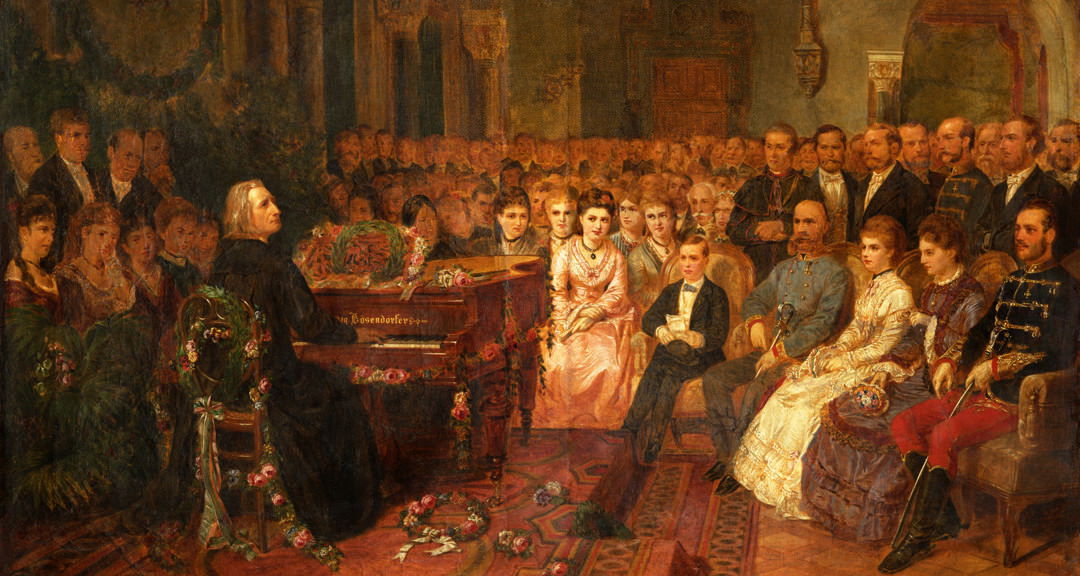
-

- Bring your own drinks
-
Wheelchair access
- Wheelchair Accessible
-
- Kid-friendly event
This is a groupmuse
A live concert in a living room, backyard, or another intimate space. They're casual and friendly, hosted by community members.
Host
Hi there!
I'm excited to welcome back pianist Javor Bračić who will be performing an all-Liszt program. This will be an encore performance of his solo recital at the 92nd Street Y last month. You can find out more about Javor at www.javorbracic.com.
Guest arrival begins at 7pm with music to begin around 7:30pm. I will provide light snacks and non-alcoholic drinks; feel free to BYOB. Please note I'd like us to take off our shoes upon entering the apartment.
What's the music?
Franz Liszt: Concert Etude "Un Sospiro"
Written in the late 1840's, this etude is one of Liszt's most lyrical, poetic, and sublime piano works. It uses the most intricate feats of pianistic technique to evoke an operatic Bel Canto style. Its light, breath-like ascending and descending melodies have earned it the title Un Sospiro: a Sigh.
Franz Liszt: Consolation No. 3
Written after Chopin's death, this miniature is an hommage to the great composer and his gentle, caressing style typical for his Nocturnes. In this simple, immediately pleasing piece, Liszt manages to pack quite a few twists and unexpected modulations that give it a poignant subtext.
Liebestraum No. 3
Originally a setting of a poem by Ferdinand Freiligrath that urges us to prioritize love in the face of life's transitoriness, in the form of a piano solo arrangement this "Love Dream" has become one of Liszt's most widely popular compositions. In essence a study in the ways one and the same note can be harmonized by ever more imaginative chords, the repetitive structure of this piece is an apt metaphor for the imperative from the title of the poem: “O, love, as long as you are able to love”
Franz Liszt: Sonata in B minor
Liszt’s magnum opus and a crowning achievement, his only piano sonata attempts and achieves to prove Liszt’s place in the musical hall of fame. Using traditional techniques such as the counterpoint of Bach and motivic work of Beethoven, as well as progressive elements such as bold modulations and harsh dissonances, Liszt manages to strike a delicate balance between conformity and innovation. In the process, he crafts a musical narrative that employs the full range of pianistic techniques to express the full gamut of human experiences, from fear, despair and anger to love, elation and pure bliss.
Where does this music come from?
Liszt stands as an important link in the evolution of musical style. His teacher, Carl Czerny, was Beethoven's pupil and, his daughter Cosima married Richard Wagner. But the connection is more than incidental: In Liszt's harmonic language one can trace elements stemming from the baroque and classical periods, as well as elements foreshadowing the modernity of Schoenberg and Stravinsky. Motivic development, a compositional process he inherited from Bach and Beethoven, is what gave birth to Wagner's idea of a Leitmotif, and ultimately found expression in the music of movies such as Star Wars and Lord of the Rings.
Location
Exact address sent to approved attendees via email.
This is a groupmuse
A live concert in a living room, backyard, or another intimate space. They're casual and friendly, hosted by community members.
Host
Attendees













 Continue with Facebook
Continue with Facebook
 Continue with Google
Continue with Google
 Continue with Apple
Continue with Apple
Comments
Comment sections are only for participants.